Cycle speedway: The 'skid kids' who raced bicycles on WW2 bomb sites
- Published
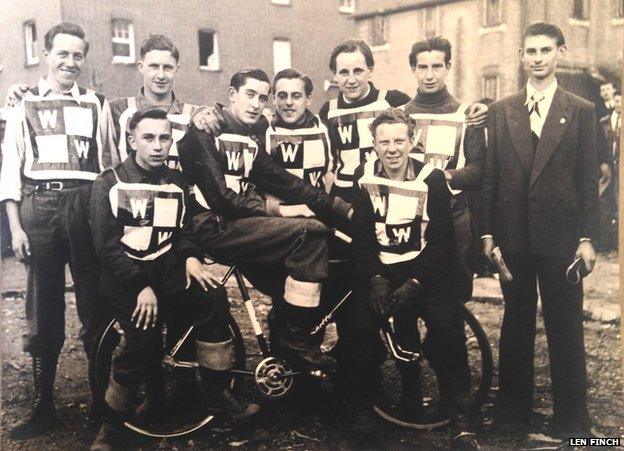
Speedway rider Len Finch, standing on the far left of the picture, with his Walthamstow Wolves team-mates in 1950
In the post-war UK, groups of teenagers found a use for the crumbling bomb sites that scarred their cities - they raced bicycles on them. How did this hazardous and haphazard pastime become a hugely popular sport?
"The back wheels skid wildly, the cinders fly, and another rider makes a four-point landing on crash helmet, hands and knee…"
This was the scene painted by The News Chronicle and Sunday Illustrated. The year was 1950, and hundreds of people had turned out to line a dusty bomb site in south London to watch the hottest new sport around - cycle speedway.
Born in the aftermath of World War Two, cycle speedway grew from humble beginnings.
Groups of teenage lads with little to do took rickety old bicycles, not otherwise roadworthy, and began racing them on makeshift tracks in the rubble of the UK's war-ravaged cities.
They were imitating motorcycle speedway - which rose to huge popularity between the wars, with tracks all over the UK that drew large crowds.
The bicycle-riding "skid kids", as they were affectionately known, wore battered old crash helmets, leather jerkins and bibs proudly marked with their team's emblem.

The track at East Surrey Grove, Peckham, south London, in 1948
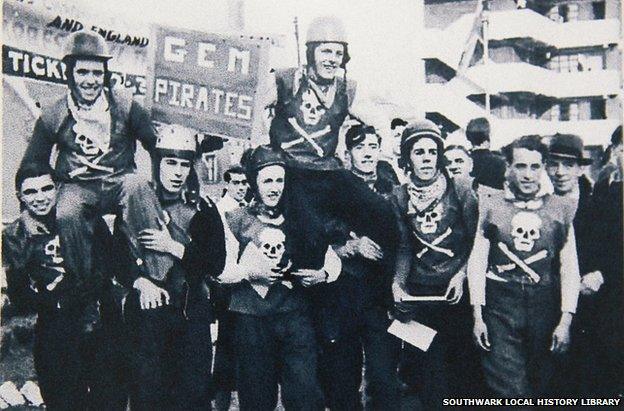
The Gem Pirates of Poole, Dorset, being crowned National Team Champions at the Bermondsey Greyhounds track
Their kit was homemade, their bikes had no gears or brakes, but many of the boys soon became master mechanics and riders.
By 1949, the Daily Graphic estimated "the number of teenage enthusiasts of this post-war craze was anything between 30,000 and 100,000".
Races were televised by the BBC, and national newspapers including the Daily Mail, the News of the World and The Star followed the results.
There were more than 200 clubs in east London alone, and even the Duke of Edinburgh was said to be a fan.
The phenomenon spread across the country. Portsmouth, Birmingham, Newcastle, Glasgow, Cardiff and many other British cities each had numerous teams.
Wherever the bombs rained down, speedway tracks rose from the ashes.
One of the original skid kids was Len Finch. He grew up in wartime Walthamstow, north-east London, and started cycle speedway racing at the age of 16 in 1946.
"Where we lived in the East End there were lots of bomb sites. They were a draw for kids - they were untamed land," he says.
"My bike was an old frame my dad bought for five shillings, and some old wheels put on. No brakes or anything. And the handlebars were bent up high like bull horns - people used to make them out of gas piping.
"After the war it was just a matter of make do and mend. It was a Cinderella sport."
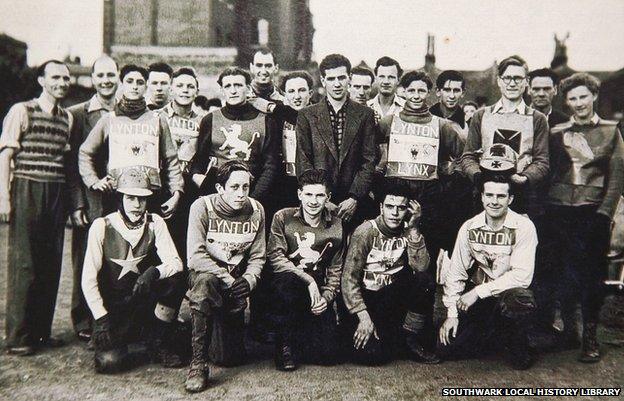
The Lynton Lynx team posing at their track in Bermondsey, south London, in about 1949
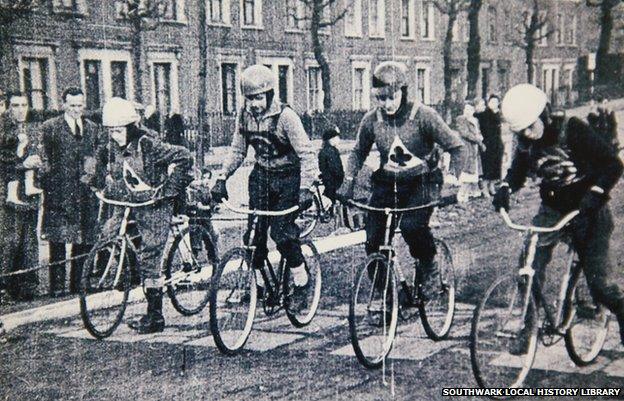
Starting lines were often a piece of knicker elastic in the early days. In later years, some clubs invested in electric starting gates
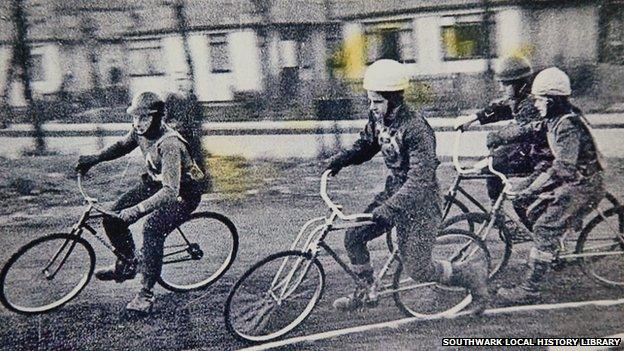
Jim Longbom holds the inside line at the Lynton Lynx track. Many of the bikes were homemade - with no brakes
Finch remembers joining together with other kids from the area to clear rubble off a bomb site behind St James Street station in Walthamstow.
They formed their own club called the Walthamstow Wolves, complete with branded bibs, team manager and mascot.
Soon they were racing teams across London, including the Warwick Lions in Hackney, the Tottenham Kangaroos, the Beckton Aces and the Portway Penguins. One of the best were the Stratford Hammers, who were based on a large bomb site at West Ham.
"You'd go round and round with your leg out left, racing against each other," Finch recalls. "We all wanted to be motor speedway riders when we grew up, so I suppose we were aping them."
In a time of post-war austerity and rationing, the bombsites offered a "paradise" of freedom for urban teens, says sports historian Simon Inglis.
"It was the birth of youth culture that hadn't existed before, which enabled kids to have a completely separate identity to their parents for the first time - cycle speedway was something that no adult did."

World War Two
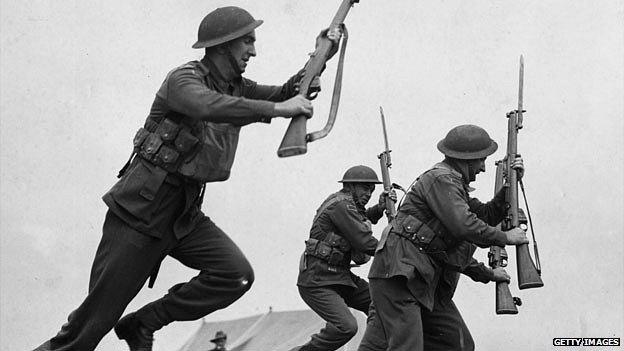

By the early 1950s, the skid kids began to gain official recognition. The National Amateur Cycle Speedway Association was set up to oversee the sport. A few local authorities found the money to build proper tracks. There were inter-city - and even international - races.
Ten thousand people are said to have watched the first international between England and the Netherlands at the Empress Hall in Earls Court, London, in 1950.
The riders might only have been aged 16 and 17, but many became minor celebrities in their local area.
Former Bermondsey Greyhounds and Lynton Lynx rider Joe Foster, now 79, remembers the thrill of competing in front of such crowds.
"It was exciting - it would be absolutely chock-a-block, quite an atmosphere with people cheering you. I'd say there were more than 3,000 people sometimes," he says.
"You had to be outstanding to get on the team. Certain riders were heroes... and you certainly got recognised by young females.
"Of course, there were loads of crashes. You had to be keen, shall we say."
The News of the World's "Speedway Correspondent" Dudley Smith wrote in 1951: "Today if you go to the more devastated areas of London or any of the other big towns on a Saturday or Sunday afternoon, you are quite likely to see a youth complete with crash helmet, coloured jersey and specially adapted bike, making his way to a bombed-site track just around the corner.
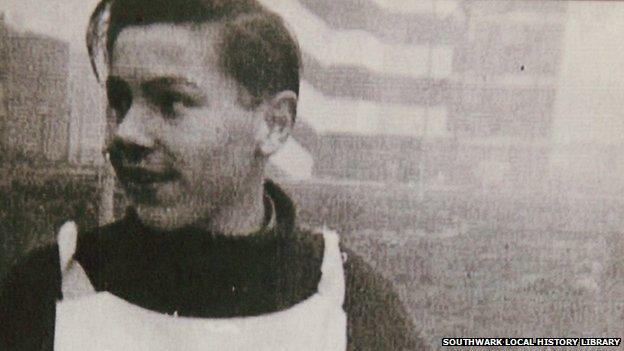
Speedway rider Joe Foster, here aged 14, remembers thousands of people turning out to watch races
"With him, probably, will be his young girl friend, one of the many fans who hang over the rails and cheer on the juvenile heroes of the backyard arenas."
But not everyone was so enamoured by the new craze. Police warned riders about using their machines on the roads and churches objected on the basis that it enticed boys away from Sunday School.
Councils widely opposed the use of bomb sites for sport, claiming it was "noisy, undignified and unnecessary".
Paddington Borough Council reportedly even burned down a bomb site track because of complaints about "obscene language and hooliganism".
In a letter to the Daily Mirror in 1949, the Taddyforde Cyclists from Exeter complained that "cycle racing will be damaged if the public thinks of it in terms of youth pedalling at a speed of which the slowest novice would be ashamed".
But others defended the sport.
With a sentiment that perhaps rings surprisingly modern, a Mrs Jean Shilllibeer, secretary of the Clapham Panthers, wrote in reply: "It keeps them out of gangs and develops in them a team spirit.
"The boys work hard in maintaining their tracks and each boy seems to find a flair for something - one finds himself good at repairing bikes, another for organisation, another for painting signs and so on."
This heyday of cycle speedway was short-lived. By the late 1950s, bomb sites were steadily being cleared away, potential riders were being drafted into the armed forces for National Service, and most clubs gradually petered out.
What remains of this era is photographs, newspaper cuttings and memories of days spent skidding through the dust. But the sport still exists. There are still thriving clubs and a national league.
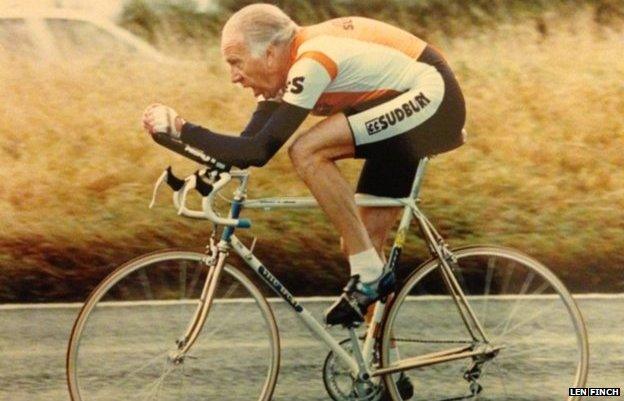
Len Finch - "Why do I keep cycling? It's something that gets in your blood, that's all I can say."
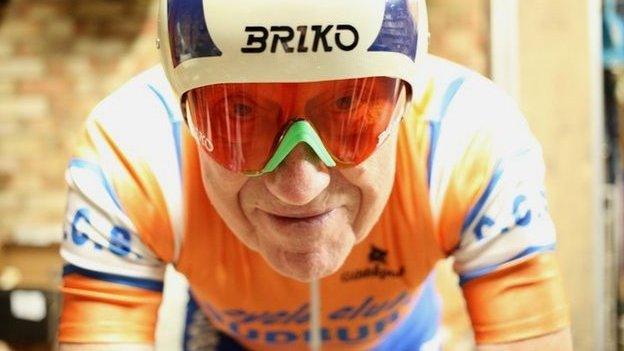
At the age of 84, Len Finch has spent 70 years in the saddle - and he still races against other veterans
And for Finch, cycling has remained a passion.
He still competes in veteran road races despite being 84 years old. And he shows no sign of slowing up - even after more than 70 years in the saddle.
"Everybody says isn't it time you packed up? I always say to the people older than me, 'Time you packed up and gave us youngsters a chance'," he says.
"Why do I keep doing it? It's something that gets in your blood, that's all I can say."
Images courtesy of Len Finch, Joe Foster and Southwark Local History Library.
Subscribe to the BBC News Magazine's email newsletter, external to get articles sent to your inbox.